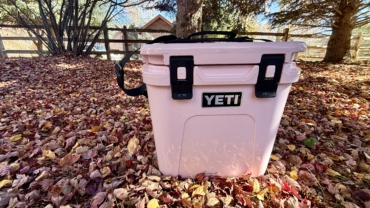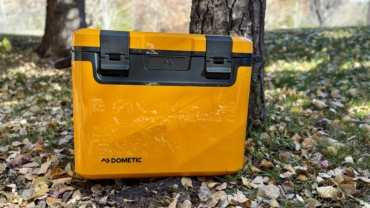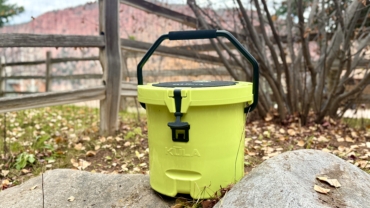With thru-hikes like the Appalachian Trail and the Pacific Crest Trail gaining popularity, hikers are constantly looking to shed weight from their packs. But you don’t have to hike thousands of miles to aim for a lighter pack.
Going lighter has a lot of advantages. You can travel long distances while reducing trail fatigue and, over time, you even reduce the stress on your body that comes from carrying a heavy pack. However, going lightweight requires extra planning and preparation, and sometimes you get less durability from your gear when you opt for lighter materials.
The National Outdoor Leadership School (NOLS) has been preparing travelers for wilderness adventures since 1965, teaching technical skills like mountaineering in New Zealand, rock climbing in Patagonia, and sea kayaking in Alaska.
The organization’s instructors are some of the most knowledgable and skilled adventurers in the industry, and we’re sharing their tips on how to lighten your pack for multiday trips.
If you want to go light (or at least lighter), follow these few basic principles. These are NOLS’ tips and tricks for getting packs under 30 pounds for multiday trips.
NOLS’ Tips for a Lighter Pack
1. Shelter
NOLS uses a pyramid structure tent (fewer poles to carry) made with lighter nylon fabric. Many lightweight backpackers reduce weight by using semi-free-standing tents rather than free-standing tents. This means the tent requires some guy-outs and often uses trekking poles for its structure.
But regardless of the tent you choose, you’ll want to keep it light. And in modern times, that means under about 3.5 pounds for a two-person tent and less for a one-person model.

2. Sleeping System
A sleeping system can be simplified into two categories: a sleeping bag and pad. Opt for a down sleeping bag rather than a synthetic one. Down is an excellent insulation choice, it’s durable, and it can be packed down into the crevices of your pack.
Note that down bags lose their insulating power if they get wet. Most modern sleeping bags fight this tendency with chemical additives that repel water. But you still want to keep it dry, so sure, pack your sleeping bag (and clothing) into a garbage bag for extra protection.
Many hikers aiming for an ultra-lightweight pack use a quilt instead of a sleeping bag. Particularly in summer weather, a quilt is plenty of insulation for sleeping and removes unnecessary fabric from the bottom of the sleeper, saving precious ounces.
When it comes to sleeping pads, you can pick from an air mattress or a foam pad. There are a ton of models on the market, but keep a combination of weight and durability in mind. Foam pads won’t leak and are very light. Some hikers choose to forgo a pad altogether.
To avoid any potential punctures and add some insulation, we suggest bringing a shorter (three-quarter length) sleeping pad, using your pack as a footrest, or using an EnsoLite foam pad.
3. Food
Today’s stoves are a wonder of lightweight engineering. And the modern hiker has a lot of very good choices.
Among the lightest options on the market, titanium alcohol stoves will save you the most weight. With no moving parts and very light fuel, these minimalistic stoves will boil water for your hot meal.
Many hikers opt to carry a sligthly heavier but more regulated canister stove. Among very light and effective models, the MSR Pocket Rocket 2 weighs just 2.6 ounces, runs off easy-to-find canisters, and costs just $45. No wonder it’s a ubiquitous piece of gear on the backpacking trail. Several other brands, such as Jetboil, offer great systems aimed at hikers.
If you get far off the beaten path or face a lot of cold conditions, another (albeit heavier) option is a white-gas stove. These are great for cold weather, as they can be pressurized in the field with a pump. Many of these can also run on kerosine or gasoline, which is a bonus for international travel where white gas, canisters, or alcohol are hard to find.
When it comes to food, planning and prepping is essential. We use many dried ingredients on our NOLS courses and still whip up food like pizza, soup, and breakfast hash. We also recommend bringing some sort of water filtration system. One very light option is the Aquamira drop, which sterilizes water with chemicals. These can be hard on your gut flora, though, so filters are often better for long-term use.
Gravity systems like the Katadyn BeFree Gravity Filter are incredibly convenient along the trail. Just fill them up, hang from a branch, and let gravity do the work. Regardless of what you chose, a water filter allows you not to lug around multiple heavy water bottles.

4. Backpack
After picking your tent, sleep system, and additional gear, you can now assess which pack will serve you best. While the season and trip duration are both factors in your pack selection, generally, your backpack shouldn’t add more than 3-4 pounds to your load. Choosing a pack with smaller capacity and lightweight construction (fewer pockets, zippers, and lighter material) are great ways to shed some ounces.
If you’re aiming for an ultralight trip where you’re carrying less than 20 pounds, consider a backpack with no internal frame. However, be mindful of the compromises you make. Pack frames help evenly distribute your load, and wider pack straps help take the pressure off your shoulders.

5. Footwear
One pound of weight on your feet equals about 5 pounds on your back, so footwear is an important place to save weight. Avoid shoes with a lot of leather — this adds weight and drying time if they get wet. Traveling with a lighter pack means you’re putting less stress on your feet, so you can get away with a trail runner or hiking shoe rather than an ankle-high boot.
Our main piece of advice? Organize and log your gear, then try everything out yourself to find your balance of comfort and efficiency. Try testing gear on a short trip before investing completely in a new set of gear. Once you find what works for you, you’ll be ready to head into the outdoors in style.
This article is sponsored by NOLS. You can learn more about the brand’s programs and offerings here.






